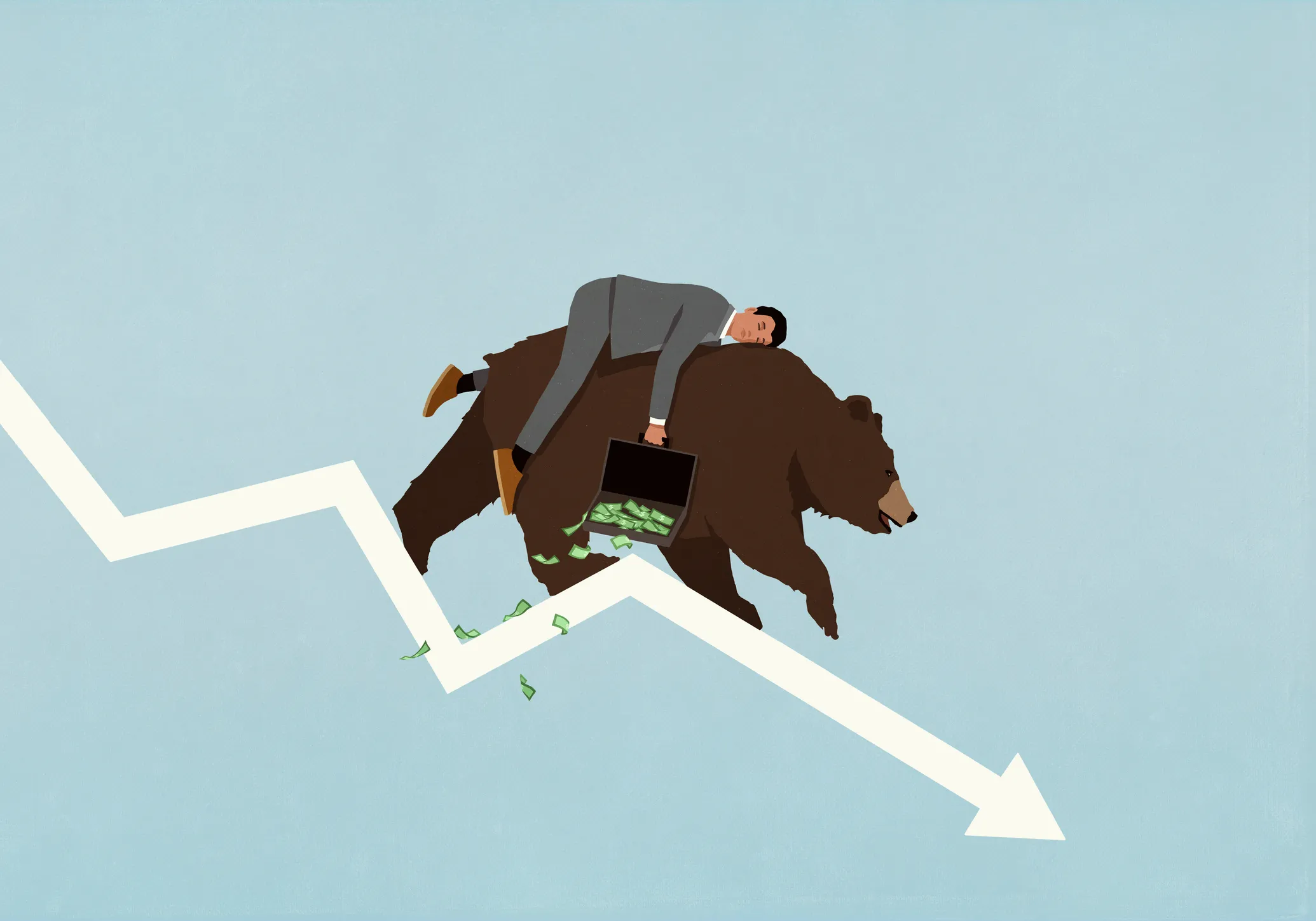A bear market represents one of the most challenging periods for investors, characterized by sustained price declines of 20% or more from recent market peaks. These downturns don’t occur randomly but result from specific economic, political, and psychological factors that undermine investor confidence and trigger widespread selling pressure. Understanding what causes bear markets is crucial for investors seeking to navigate volatile financial landscapes and protect their portfolios during turbulent times.
Bear markets have shaped financial history through events like the Great Depression of 1929 and the 2008 financial crisis, demonstrating their profound impact on both individual wealth and broader economic stability. While these periods can be devastating for unprepared investors, recognizing the warning signs and underlying causes can help market participants make more informed decisions during uncertain times.
Economic Recession and GDP Decline

Economic recession stands as the primary catalyst for most bear markets, creating a domino effect that ripples through financial markets. When gross domestic product contracts for consecutive quarters, it signals fundamental weakness in the economy that directly impacts corporate earnings and investor sentiment.
During recessions, businesses face declining revenues as consumer demand weakens, leading to reduced profitability and lower stock valuations. Rising unemployment rates compound these challenges by further reducing consumer spending power, creating a negative feedback loop that can persist for months or years.
The relationship between recessions and bear markets is so strong that it’s rare to experience one without the other, though bear markets often begin before official recession declarations as investors anticipate economic weakness.
Interest Rate Hikes and Monetary Policy
Central bank interest rate increases represent another significant trigger for bear market conditions. When borrowing costs rise, companies face higher expenses for debt servicing and expansion financing, directly impacting their profit margins and growth prospects.
Higher interest rates also make bonds and treasury bills more attractive to investors compared to riskier stock investments. This shift in investor preference toward safer assets reduces demand for equities, contributing to sustained price declines across major market indices.
The Federal Reserve and other central banks typically raise rates to combat inflation, but this monetary tightening can inadvertently trigger the very market downturns they seek to prevent through economic cooling.
Geopolitical Events and Global Uncertainty
Geopolitical tensions and unexpected global events can rapidly transform market sentiment from optimistic to pessimistic. Wars, terrorist attacks, pandemics, and trade disputes create uncertainty that causes investors to flee from riskier assets toward safe-haven investments.
The COVID-19 pandemic exemplified how external shocks can trigger event-driven bear markets, as global lockdowns and supply chain disruptions fundamentally altered economic activity patterns. Similarly, tensions between major economies like the United States and China can impact global markets through their effects on international trade and investment flows.
These geopolitical factors often interact with existing economic vulnerabilities, amplifying market volatility and extending the duration of bearish conditions.
Market Bubbles and Overvaluation
Asset bubbles represent a unique cause of bear markets, occurring when prices rise far beyond their intrinsic values due to excessive speculation. The dot-com bubble of the early 2000s and the housing bubble preceding the 2008 financial crisis demonstrate how overvaluation can lead to dramatic market corrections.
When bubbles burst, the rapid price declines often spread beyond the initially overvalued sectors, creating broader market contagion. Investors who purchased assets at inflated prices face substantial losses, leading to panic selling that accelerates the downward spiral.
The Great Depression provides a historical example of how speculation-driven bubbles can trigger prolonged bear markets lasting a decade or more.
Inflation and Corporate Earnings Pressure
High inflation can trigger bear markets by squeezing corporate profit margins and reducing consumer purchasing power. While moderate inflation sometimes supports economic growth, excessive price increases create multiple challenges for businesses and investors.
Companies may struggle to pass increased costs to consumers, leading to declining corporate earnings that disappoint investors and trigger sell-offs. Additionally, inflation often prompts central banks to raise interest rates, creating the monetary policy pressures discussed earlier.
Investor Sentiment and Market Psychology
Negative investor sentiment both causes and perpetuates bear market conditions through psychological factors that extend beyond fundamental economic data. When pessimism dominates market psychology, investors become increasingly risk-averse and prefer holding cash or bonds over stocks.
This sentiment-driven selling creates increased volatility and unpredictable price swings that characterize bear market periods. Fear-based decision-making can cause markets to decline more severely than economic fundamentals alone would justify, demonstrating the powerful role of psychology in financial markets.
Understanding these interconnected causes helps investors recognize potential bear market triggers and develop appropriate defensive strategies for protecting their portfolios during challenging market conditions.
